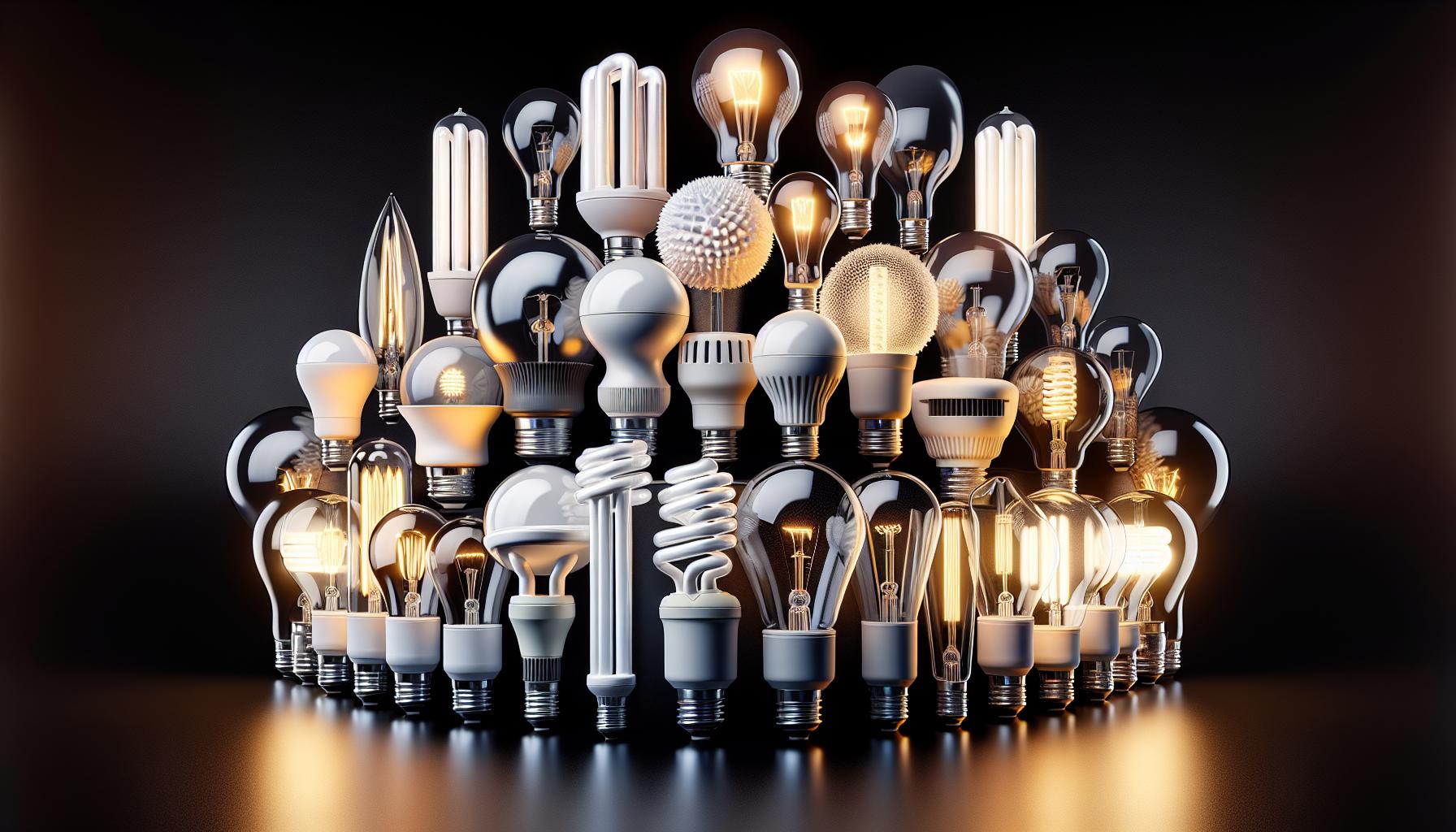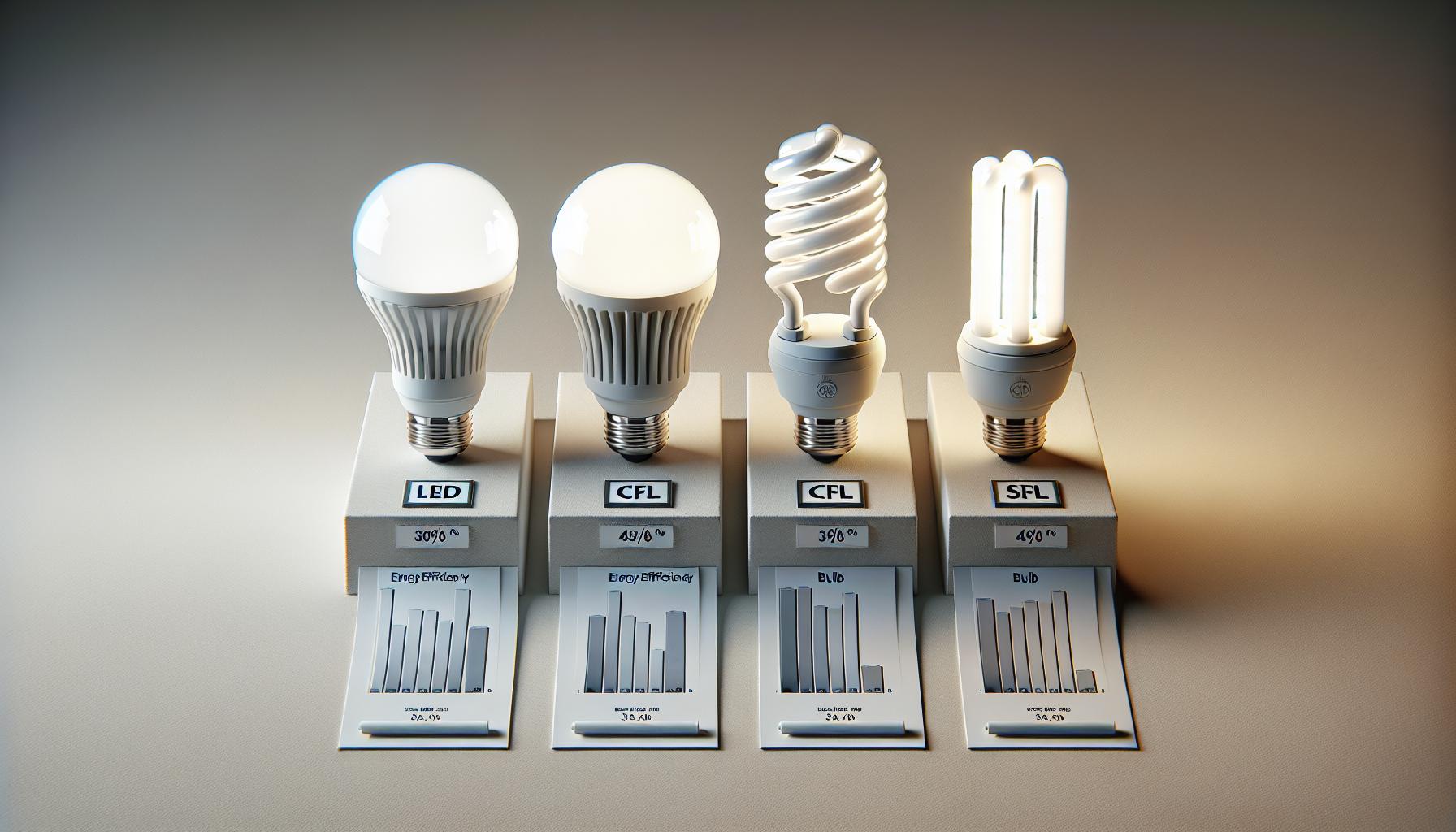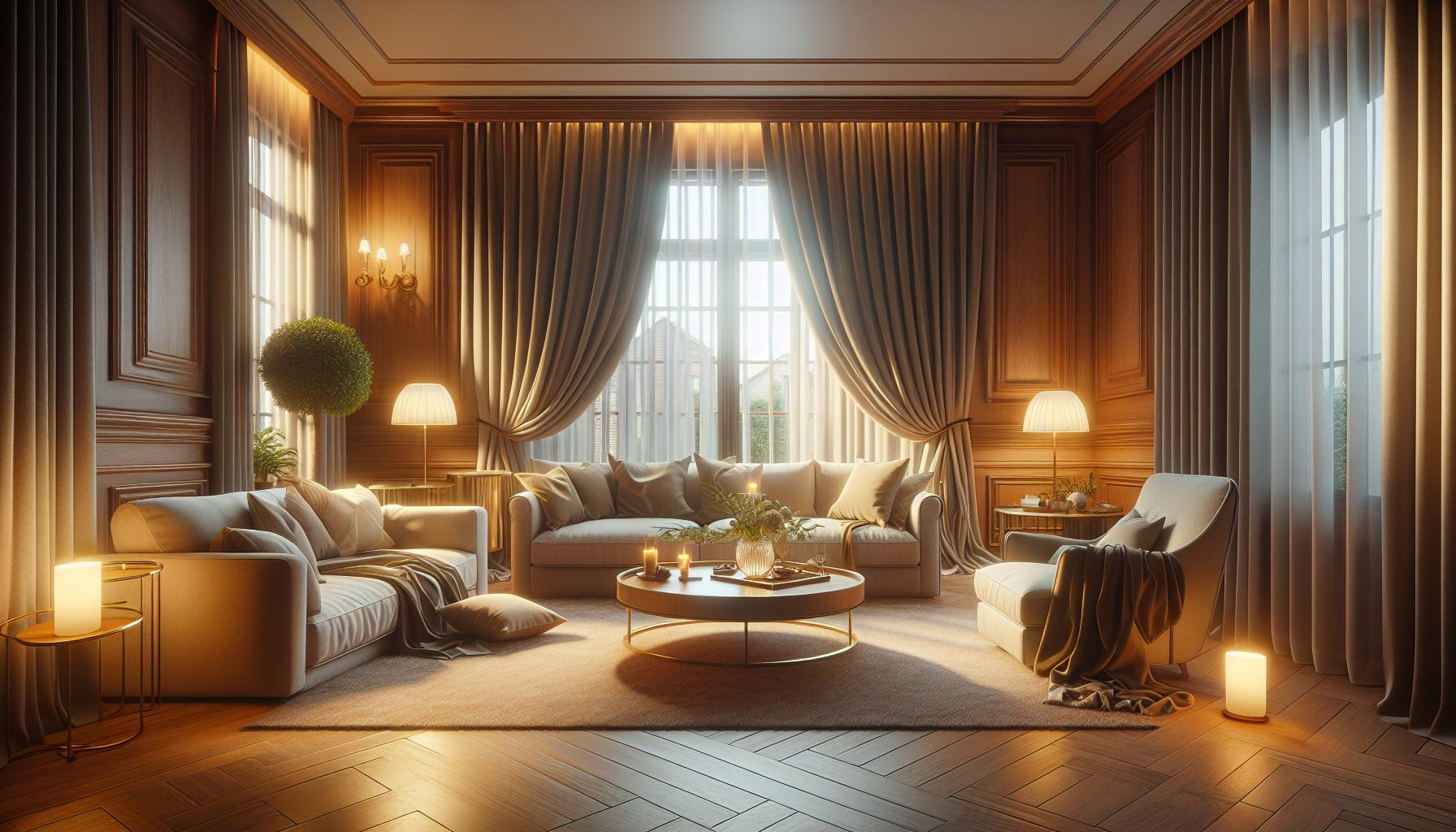Imagine life without the humble light bulb. You’d be relying on candles or oil lamps, struggling to continue your day after the sun sets. But thanks to this brilliant invention, you’ve got the power to push back the night and keep your world illuminated.
Light bulbs are more than just a convenience; they’re a cornerstone of modern living. They extend your productive hours, brighten your home, and even affect your mood and health. Let’s explore how these glowing marvels have truly lit up our lives.
Evolution of Light Bulbs
Light bulbs have undergone a significant transformation since their inception. Your home and the way you complete projects are directly impacted by these advancements. From the humble beginnings with Thomas Edison’s incandescent bulb to today’s energy-efficient models, light bulbs have had quite a journey.
In the late 19th century, the incandescent bulb lit up for the first time, changing the world forever. These bulbs would become a staple in households for more than a century. However, they weren’t without flaws. Their energy consumption and heat emission were far from ideal, with a considerable amount of electricity being converted to heat rather than light.
As a DIY enthusiast, you’ve probably dabbled with different types of bulbs for various projects. You might’ve noticed how halogen lamps, a brighter and more energy-efficient sibling of the incandescent, can light up a workspace effectively. Halogens made it easier to focus on the details of your labor without straining your eyes.
By the turn of the 21st century, compact fluorescent lamps (CFLs) entered the scene. These offered a significant upgrade in energy efficiency, lasting about ten times longer than their incandescent counterparts. They did, however, contain mercury, raising environmental concerns for users like you who are mindful of their ecological footprint.
LED technology reigns supreme in the lighting sector. LEDs offer unparalleled efficiency and longevity, consume less power, and are incredibly versatile. Their durability and range of color temperatures make them a top choice for your home and DIY projects. You know that an LED can provide the right ambience for a cozy evening or the bright, focused light essential for precision work.
With the evolution of light bulbs not showing signs of slowing down, you’re always on the lookout for the next innovation that will make your projects shine and your home more welcoming. From smart bulbs you can control with your phone to advancements in light quality and spectrum, there’s always something new just around the corner.
The Science Behind Light Bulbs
Light bulbs may seem simple at a glance – flick a switch, and your room is bathed in light. But have you ever paused to ponder what really happens when that bulb illuminates? The science is quite fascinating.
At its core, a light bulb is an electrical device that produces light from electricity. The three main components of a traditional bulb are the filament, the glass enclosure, and the inert gas inside the enclosure. When you switch on a light, electricity flows into the filament, heating it up until it glows – a process known as incandescence.
This process is not 100% efficient. In fact, most of the energy from an incandescent bulb is lost as heat. That’s why the shift to more advanced light bulbs like LEDs is crucial. LED technology relies on semiconductors to convert electricity directly into light through a process called electroluminescence. This is a fancy term for what happens when electrons pass through a material and release energy as photons – those are the light particles. With LEDs, more electricity is converted into visible light, meaning less waste and a brighter beam per watt.
Let’s take a look at the efficiency comparison in lumens per watt (lm/W), the measure of a bulb’s brightness output divided by the power it consumes:
| Bulb Type | Efficiency (lm/W) |
|---|---|
| Incandescent | 10-17 |
| Halogen | 16-22 |
| CFL | 35-60 |
| LED | 80-100 |
What this means for you is that when you’re completing your home DIY projects or lighting up your workspace, choosing an LED bulb can offer you the most light while consuming the least amount of power. Plus, it’s easier on your wallet in the long run.
« Do LED Light Bulbs Make Noise? Uncover the Silent Truth
What Are Light Bulbs Measured In? Unlock the Secrets for Perfect Lighting »
The versatility of light bulbs in our daily tasks can’t be understated. Imagine trying to match colors for your room painting job or accurately measure cuts for that custom shelving unit in dim lighting. LEDs offer a variety of color temperatures, too, so you can pick just the right spectrum to ensure accuracy – and make those colors pop.
Types of Light Bulbs
As you delve deeper into the world of illumination, you’ll find a plethora of light bulb options, each with unique features and benefits that can suit any of your home DIY projects or workspaces. Understanding these differences is key to optimizing your environment’s lighting.
Incandescent Bulbs
The traditional bulb that’s been around since Thomas Edison’s days is the incandescent bulb. They’re known for their warm glow and are the benchmark many people use when thinking about light quality. However, they’re not as energy-efficient as modern alternatives, converting most of the electricity into heat rather than light.
Compact Fluorescent Lamps (CFLs)
In your quest for energy savings, you might have turned to CFLs. They use significantly less electricity than incandescent bulbs and last longer. But these bulbs do take a moment to warm up to full brightness, and some people are not fond of the light quality they emit.
Light Emitting Diodes (LEDs)
Now let’s talk about the rockstars of the lighting world: LEDs. They have revolutionized lighting with their incredible efficiency and long lifespans. Unlike incandescent bulbs, LEDs don’t waste energy on heat, making them cool to the touch. Moreover, LEDs offer a range of color temperatures, enabling you to customize the vibe of any room precisely to your liking.
Halogen Bulbs
Halogen bulbs are a type of incandescent that offers a crisp, white light that closely mimics natural daylight. They’re ideal for tasks that require sharp accuracy and clarity. However, similar to traditional incandescents, they’re not the most energy-efficient.
When you’re deciding which bulb to choose for your next project, consider the balance between efficiency, color temperature, and the quality of light you need. Your project’s success might just depend on the ambiance you create with the right kind of bulb.
Energy Efficiency and Cost savings
When you’re knee-deep in a DIY home project, you know that every detail counts, especially when it comes to selecting the right light bulbs for efficiency and savings. Let’s dive into why energy efficiency in lighting isn’t just a buzzword—it’s a smart way to reduce your electricity bills and your carbon footprint.
Energy-efficient light bulbs like LEDs and CFLs are game changers compared to traditional incandescent bulbs. An LED can use up to 75% less energy and last 25 times longer than its incandescent counterpart. That’s not just impressive; it’s a transformation in how you illuminate your home.
Here’s a breakdown to put it into perspective:
| Light Bulb Type | Energy Use | Life Span |
|---|---|---|
| Incandescent | High | 750-2,000 hours |
| CFL | Medium | 8,000 hours |
| LED | Low | 25,000 hours |
Imagine not having to clamber up a ladder to change a bulb for years at a time. It’s not only convenient but also cost-effective. Although the initial price tag for LEDs is higher, the long-term savings are undeniable. As a DIY enthusiast, you understand the value of investing upfront for greater returns.
But it’s not just about the bulb’s lifespan. LEDs are cool to the touch, meaning they don’t release as much heat as incandescents, contributing to lower cooling costs in the summer. The savings extend beyond the electric bill.
Switching to energy-efficient lighting isn’t just a choice; it’s a smart strategy for any home project. Each bulb you replace means less energy consumption, which translates into savings. These savings aren’t mere pennies; here’s a case in point: switching 10 incandescent bulbs to LEDs can save you on average $50 per year. Now, that’s money better spent on your next big project.
Remember, the type of fixture you choose can also affect your bulb’s efficiency. Fixtures designed for LEDs maximize light output and reduce waste. Pairing the right fixture with the right bulb enhances both performance and savings, illuminating your DIY success in the best light possible.
The Impact of Light Bulbs on Mood and Health
If you’ve ever felt more energetic and alert under bright lights or more relaxed in a room bathed in soft, warm lighting, you’re experiencing the profound impact of light bulbs on mood and health. Light quality and color temperature play significant roles in influencing how you feel, both physically and emotionally.
Brightness and Alertness
Ever notice how you perk up in a well-lit room? There’s science behind that. Bright light, particularly in the blue-white spectrum, can enhance alertness and improve performance on tasks. This is especially useful during the day when you need that extra boost for your DIY projects.
- Brighter lights increase concentration
- Cool white and blue light are stimulating
- Consider adjustable lighting for task areas
Light and Your Sleep Cycle
Just as light can energize you, it also affects your sleep-wake pattern, known as your circadian rhythm. Exposure to light, especially blue light emitted by many LEDs and screens, can interfere with your ability to fall asleep. Soft, warm bulbs, meanwhile, can create a calming atmosphere conducive to sleep.
- Avoid blue light before bedtime
- Use warm light in bedrooms and relaxation spaces
- Consider smart bulbs that can change color temperature
Mood Enhancement with Lighting
Lighting isn’t just functional; it’s emotional. The right lighting can lift your spirits, calm your nerves, and even make spaces feel more spacious or cozy. Dimmable LEDs offer you the flexibility to adjust the ambiance of a room instantly.
- Dimmers allow for mood adaptation
- Soft lighting can reduce stress
- Bright lighting can make spaces feel more open
Health Benefits Beyond Visibility
There’s more to light than meets the eye. UV-free LED lights don’t just provide illumination; they help protect your skin and the furnishings in your home against UV damage.
- LEDs are UV-free
- Protects skin and furniture from UV exposure
Remember, balancing the various aspects of lighting in your home takes a little finesse, but it’s well worth the effort for both your comfort and well-being. Adjusting the lighting to suit the time of day and the activity at hand can greatly improve both your productivity and relaxation times.
Conclusion
You’ve seen how light bulbs are more than just sources of illumination—they’re tools that shape your environment and well-being. With the right choices, you can enjoy a blend of efficiency, cost savings, and a boost to your mood and health. Remember, the glow in your home can influence everything from your focus to your relaxation. So next time you’re shopping for bulbs, think about the long-term benefits that go beyond just lighting up a room. Embrace the power of light and let it work wonders for your space and spirit.
Frequently Asked Questions
What are the best energy-efficient light bulbs for home projects?
Energy-efficient bulbs such as LEDs and CFLs are best for home projects due to their lower energy usage and longer lifespan compared to traditional incandescent bulbs.
Are LED lights more cost-effective despite their higher price?
Yes, LED lights are more cost-effective in the long run. They use less energy and have a longer lifespan, leading to savings on electricity bills and replacement costs.
Do LEDs contribute to heat reduction in homes?
LEDs are cool to the touch and help reduce cooling costs in the summer, thereby contributing to heat reduction inside homes.
How does light bulb type affect mood and health?
Light quality and color temperature can influence mood and health. Bright lights in the blue-white spectrum can boost alertness, while warm bulbs can encourage relaxation and sleep. Dimmable LEDs offer the flexibility to adjust room ambiance.
Can lighting impact overall well-being?
Yes, appropriate lighting can significantly impact well-being by enhancing mood, performance, and sleep quality. It’s important to balance lighting features for comfort and health in your home.
Are UV-free LED lights better for skin and furnishings?
UV-free LED lights are beneficial for protecting both skin and furnishings from UV damage, contributing to better health and the longevity of home interiors.





